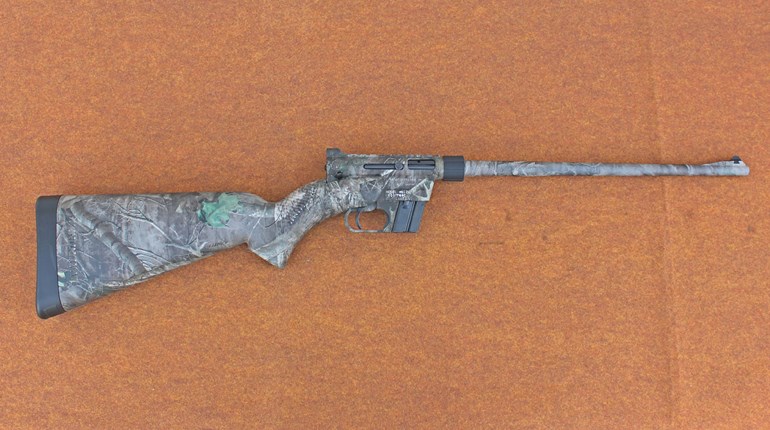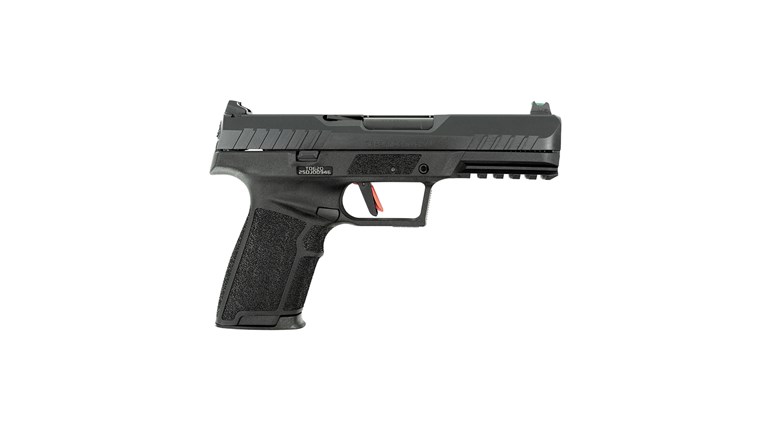
“One is challenged to cite an American athlete in any sport who has maintained his competitive excellence for such a duration.”
—The American Rifleman on smallbore legend Lones Wigger, Jr., October 1979
The 1979 printed program was the first to feature a map of northern Ohio with its network of route numbers, turnpike connectors, airport symbols and rail lines for competitors heading to Camp Perry. Until now, directions came in text form alongside other pertinent items in the General Information section of the program—and in the early days the specific page may even have been shared with the uninitiated rail or bus line employee who needed proof that Camp Perry existed. Now, more than 70 years since Ammon Critchfield cut the first swath through the swampy acreage, what competitors saw immediately upon turning the cover of their programs was the trail leading to their shooting Mecca.

Three of four national champions in 1979 were returnees to the promised land of victory while the lone newcomer, Darius Young of the Army Reserves, topped this year’s pistol field with a 2631-125X, beginning a period that spanned two decades where, more often than not, he would vie for national honors. Young’s win included .22 Championship and President’s Match victories in an overall effort that gave him a two-point advantage over Capt. Kenneth Buster of the National Guard.
In other pistol categories, Ruby Fox reclaimed the women’s title she first won three years earlier, former national champion Donald Hamilton was high civilian, Gil Hebard topped the senior class for the sixth straight year and U.S. Army Reserve Gold, with Young and Fox on the team, won the NRA championship by a single X.

In the National Trophy pistol matches, Marine Sgt. Mitchell Reed claimed the Custer Trophy while U.S. Army Blue won the Gold Cup by a three-point margin over All Guard Blue.
Like so many national smallbore prone championships before, this year’s contest boiled down to the last match. Dave Weaver, the 1976 champion, was in position to repeat from the start, but he had John Comley and Marsha Beasley close behind after the metallic sight phase, which Weaver won by a slim four-X margin at 3197-261X. In any-sight competition, Capt. Bob Mitchell of the Army Reserves was high scorer with a 3199, but Weaver duplicated his 3197 output and with his 6394-532X overall, edged Mitchell by one. With his Winchester 52D, Weaver collected his second Critchfield Trophy, emblematic of the prone national championship.
At two points back, National Guard Specialist Mary Stidworthy may have lost her bid for a third straight national title when she finished third overall, but her late rally did allow her to pick up a record fourth consecutive women’s title when she came from behind to displace Beasley. Don Wallace made his own mark on National Match history when he won the inaugural sub-junior national title on his very first trip to Camp Perry. Brad Mundell led the juniors, Mark Marinoff topped the collegians and Richard Hanson retained his senior crown.

Stidworthy did fire the high U.S. score in Randle Team competition this year and was the first to be officially recognized for the distinction. Eleanor Dunn, a noted competitor in the 1940s who in the early 1950s was responsible for the organization and conduct of the first international Randle postal match, was on hand this year as an official witness and was instrumental in establishing the high scorer award in her name.
The second year of three-position competition was marked by a veritable binge of record breaking. While the numbers fired this year were quality scores, the fact that all but one match record was broken is more a testament to the inclement conditions that competitors faced the year before. The metallic-sight aggregate went to Kurt Fitz-Randolph of Tennessee Tech College with a record 1145. Fort Benning’s Ernie Vande Zande also tallied an 1145 which forced the statistical office to go to the rulebook and determine that Fitz-Randolph won on the strength of his higher standing score.
International shooters to the core, both Vande Zande and Fitz-Randolph stayed with iron sights during the any-sight phase—a strategic error for both. With two matches to go, Lones Wigger, Jr., emerged to set a record for standing (383) and took the lead. Even though Carl Jooss won the other two position matches, Wigger claimed the any-sight aggregate and had enough with his 2304 grand aggregate to win his fourth straight position title, his 12th overall in 17 years. Robert Makielski matched the champ in the consecutive win department by earning his fourth straight senior title while Fitz-Randolph cleaned up in three categories: civilian, collegiate and junior. Army Specialist Karen Monez, whose future at the National Matches would include the celebrity of being the only woman to ever win the national open position title (1987), was the 1979 women’s champion.

At the seasoned young age of 22, Carl Bernosky became the first high power competitor at the National Matches to win three consecutive championships and the 2374 he produced with his Winchester Model 70 soundly beat that of the high service score fired by Marine Maj. George Van Orden (2352) with his M14. At this point in National Match history, most big bore competitors fired Winchesters and Remingtons, while the M1 was giving way to M14s.
Noma McCullough won the first of her many national women’s titles while Mark Liebetrau was named top junior, Janice Geipel was top collegian and Gerritt Stekeur closed out the decade with his fifth senior title.
In long-range competition, the Navy’s Michael Gorchinski won the Wimbledon Cup in a match that was delayed at one point due to lack of visibility, while Leech Cup honors went to Army Master Sgt. William Lee with a record-tying score. No Palma Individual Match was fired in 1979.

Since becoming a National Board event three years earlier, the President’s Match assumed its familiar position as the first contest fired after the range change from smallbore. National Guardsman Richard Scheller emerged the winner over 678 others while Marine Gunnery Sgt. Frank Kruk topped the National Trophy Individual field the next day before joining his colleagues over a week later to win the team event over another Leatherneck unit. The curtain was drawn on the last program of the decade with the firing of the Infantry Team Match, which went to U.S. Army Reserve Gold by a 26-point margin over the National Guard.
Show me more historic articles about the National Matches and other competitions.


































